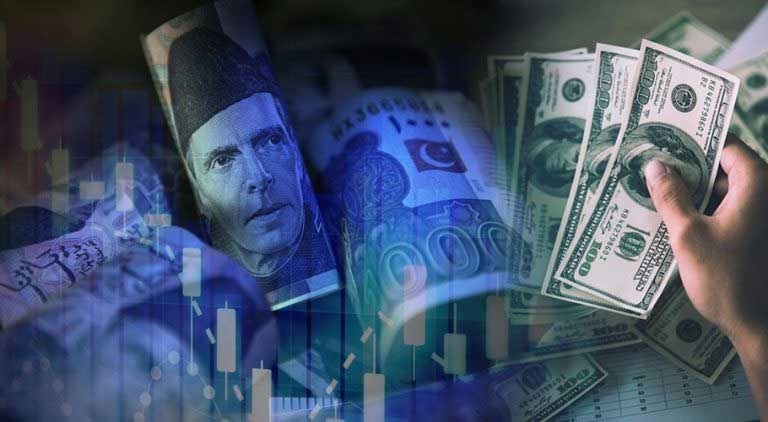Recently, two news stories from India have captivated audiences with tales of immense wealth and opulence. The first highlighted how the total assets of the Indian conglomerate, the TATA group, have surpassed Pakistan’s GDP. The second detailed the lavish spending on the wedding of Mukesh Ambani’s son, with costs soaring above half a billion dollars. Meanwhile, Pakistan finds itself scrapping for every million dollars. Furthermore, while numerous Indian entrepreneurs have achieved billionaire status, no Pakistani has yet to appear on such esteemed lists.
Equating corporate assets with a country’s GDP or viewing extravagant expenditure by an individual as a reflection of national well-being are misleading. Yet, these narratives spread like wildfire on social media, becoming a topic of discussion for millions within minutes. Even respected economists have been noted referencing these stories, which serve to enhance India’s global soft image. Conversely, Pakistan is often portrayed in a negative light, with stories of poverty prevalent, thereby tarnishing its image. This disparity in representation obstructs Pakistan’s ability to cultivate a favorable international perception.
The intent of this article is twofold: to argue that the widely recognized billionaire lists are imperfect, suggesting that Pakistan is not devoid of affluent individuals; and to assert that the wealth of a few should not be confused with the prosperity of an entire nation.
When considering Pakistan’s affluent, Malik Riaz of Bahria Group immediately comes to mind, and no doubt that he is the nation’s wealthiest. Despite his immense fortune, he has not been featured on the billionaire lists compiled by Forbes and similar entities. This omission, I argue, is less an indication of Pakistani poverty and more a critique of the methodologies these organizations employ.
Forbes, a leading publisher of such lists, criteria include possessing a fortune of at least one billion dollars. I maintain that Malik Riaz has been eligible for inclusion on this list for the past two decades, yet his name remains absent. Evidence supporting my stance includes:
1. In response to the devastating floods of 2010, Malik Riaz pledged to donate 75 percent of his wealth to the victims, amounting to over $2 billion. This pledge suggests his total wealth at the time exceeded $2.5 billion. Since the donation was not executed, this wealth presumably remains with him, qualifying him as a continuous billionaire since 2010.
2. In 2013, Malik Riaz announced plans to construct the world’s tallest building in Karachi in collaboration with the Abu Dhabi Group, a project estimated at $45 billion. Is it conceivable that someone central to a project of this magnitude lacks a personal billion-dollar capital?
3. In 2019, the Supreme Court levied a Rs 460 fine on Bahria Town Karachi, roughly equivalent to $3.5 billion at the time, payable solely by Malik Riaz. Could someone liable for a fine of this scale not possess personal wealth exceeding a billion dollars? The fine itself suggests Malik Riaz’s actual capital far exceeds $3.5 billion. Considering Bahria Town Karachi is only one of many projects under Malik Riaz’s management, it’s plausible to assume that his actual wealth could be upwards of twenty billion dollars.
Social media discussions about the points mentioned previously generated various comments, summarized as follows:
1. A common belief is that Forbes only includes assets acquired through legal means, thus excluding Malik Riaz. However, Forbes does not explicitly state this criterion on their website. They exclude assets tied directly to government influence, but since Malik Riaz has never held a government position, his assets should logically be eligible for inclusion.
2. Some argue that projects like Bahria Town may underreport income, evading Forbes’ radar. This may be true, yet, the significant fine imposed by the Supreme Court in 2019 implies the actual asset value reported before the Supreme court must be much higher than reported, making the non-disclosure argument hard to justify.
3. Others note that Bahria Town’s wealth isn’t solely Malik Riaz’s but also includes investments from thousands. In the same way, the Tata Group isn’t owned only by Ratan Tata, whose personal wealth is reportedly under one billion dollars. The 2019 fine targeted only Malik Riaz, paid through adjustments with funds repatriated from the UK. This suggests Riaz’s wealth is significantly more than $1 billion if he’s capable of settling a $3.5 billion fine alone.
4. Despite Forbes ranking individuals and business groups, neither Malik Riaz nor the Bahria Group has been featured, which is puzzling.
Some acquaintances point out that conglomerates like the Tata Group and Reliance Group diversify into so many different sectors, unlike Malik Riaz, who is solely focused on real estate. This distinction underscores my primary point: the wealth of certain individuals or corporations doesn’t equate to the overall prosperity of their country. Thus, the financial success of Tata and Reliance isn’t indicative of widespread wealth across India.
A key difference exists between the wealthy in India and Pakistan. Indian billionaires manage enterprises that provide employment to millions, contrasting with Pakistani tycoons, who often seek to increase their fortunes through real estate at the expense of arable land and providing only minimal employment.
Real estate’s allure, in my view, is why other industries struggle to compete. The capital poured into just a fraction of a single phase of Bahria Town exceeds the investment needed for a major industrial venture. The funds allocated to Bahria Golf City alone could potentially support the domestic production of significant enterprises like Boeing or Airbus. Pakistan annually receives about $30 billion in remittances, with the vast majority channeled into real estate, making the sector’s enormity daunting to surpass. Similarly, a major chunk of domestic savings also goes into real estate, which makes real estate really very large.
In my view, not only Malik Riaz but many other Pakistanis have a fortune of over billion, and these billionaires doesn’t belong to politics, rather, they are from real estate. Yet, Forbes has not extended its coverage to Pakistan’s economic landscape, a noticeable departure from its usual practices and stated mission.
Moreover, in my view, the valuation of Bahria Town far surpasses Pakistan’s official GDP figures, much like the Tata Group’s assets outstrip Pakistan’s GDP. However, having billionaires in Pakistan hasn’t necessarily translated to happiness for the average citizen, just as a few affluent individuals in India do not symbolize national contentment. While Indian billionaires invest in sectors that significantly employ, Pakistani investors often chase rapid capital growth, primarily in real estate. The focus, therefore, shouldn’t be on the sheer number of billionaires but on optimizing capital utilization in Pakistan to benefit a broader population segment.
Is Pakistan without billionaires?




